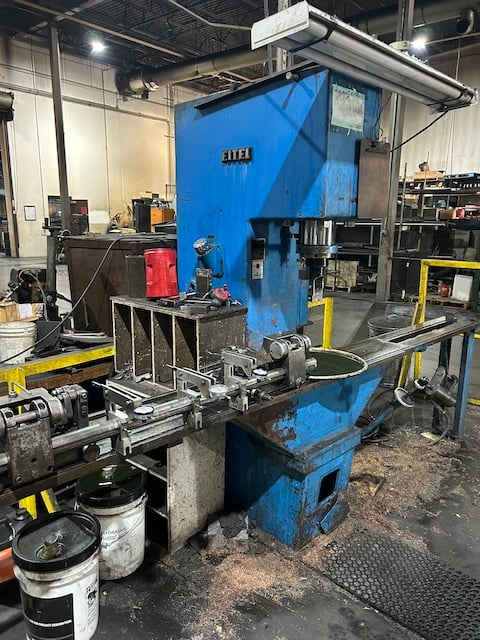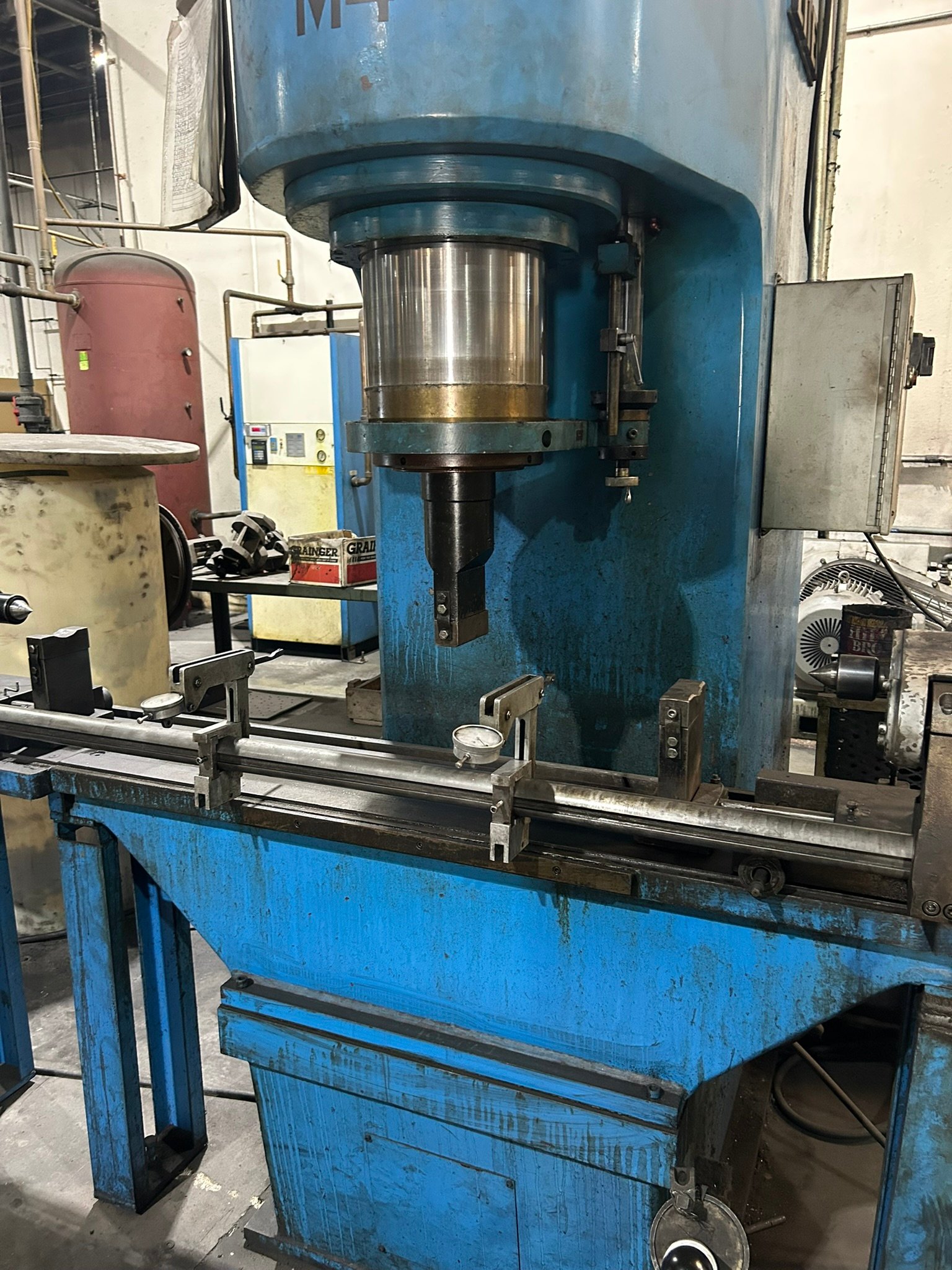What is metal straightening? Metal straightening corrects warpage, distortion or other slight misalignments that occur after various types of heat treatment. Our process uses a combination of automatic and manual straightening presses, ranging from 25 to 100 tons, to straighten parts. Straightening brings parts back into specification with tight tolerances — as tight as .001” over lengths up to 60” — ensuring the geometry you need and expect from your parts is the geometry you get.
Common Applications of Metal Straightening
Metal straightening is essential for parts that must meet precise dimensional, form, or alignment requirements following heat treatment. Our metal straightening service is most often used in high-performance industries such as:
- Aerospace
- Automotive
- Military & Defense
- Medical Devices
- Hydraulic & Powertrain Components
- Heavy Equipment & Industrial Machinery
Common Parts That Require Straightening
Typical parts that need straightening post-heat treat include:
- Shafts and axles
- Gears
- Camshafts and crankshafts
- Bearing races
- Rollers
- Hydraulic bodies and components
- Assemblies with tight flatness or alignment requirements
- Plates or flanges that warp during heat treating
Metals That Can Be Straightened
There are a variety of metals that can be reliably straightened, like medium- to high-carbon steels, alloy steels and ductile iron. We often get asked: can stainless steel be straightened? In many cases, yes, but not as universally as other metals from our list. If the stainless steel has sufficient toughness and isn’t at a hardness or microstructure level that makes it brittle, we can straighten it. Post-heat treat straightening is more successful when distortion is handled early and parts are carefully fixtured.

Benefits of Straightening
Straightening offers essential improvements for OEMs who need precision, performance, and minimal rework. Key benefits include:
- Dimensional accuracy & alignment — Straightening restores parts to spec, reducing errors in assembly and operation
- Reduced scrap and waste — Rather than replacing warped parts, straightening salvages them
- Better performance and reliability — Proper geometry ensures even stress distribution, less fatigue and smoother operation
- Improved fit and assembly — Components that mate or align with others will assemble properly, avoiding out-of-tolerance misfits
- Cost savings — Less downstream machining, fewer returns and fewer failures in service
Considerations
Before specifying metal straightening as part of your project, consider:
- Degree of warpage and distortion — Minor bends are easier; severe deformation might require multiple methods or even remanufacturing
- Material hardness & toughness — Very hardened or brittle metals are more prone to cracking during straightening. Stainless steels with certain microstructures may be more challenging
- Part geometry and length — Lengths up to ~60″ are within our capabilities. Longer parts or unusual shapes require special tooling or fixturing
- Potential residual stresses — Straightening itself can introduce stresses; follow-up treatments or controlled cooling or tempering may be necessary
- Tolerance requirements — Achieving tight tolerances (e.g. .001”) demands precision equipment, skilled operators, and sometimes custom fixtures
Trust INCERTEC With Your Straightening Hardening Needs
INCERTEC’s modern, ISO 9001 certified facility offers full quality control and an end-to-end heat treatment and straightening process. In addition, our skilled technicians are supported by SPC (Statistical Process Control) reports and stringent dimensional inspections.
If your OEM components require superior straightness, precise geometry, or alignment after heat treating, INCERTEC’s metal straightening service is ready to deliver. Contact us today to discuss your part specifications, tolerance needs, and how we can help bring your parts into spec — on time and on budget.
